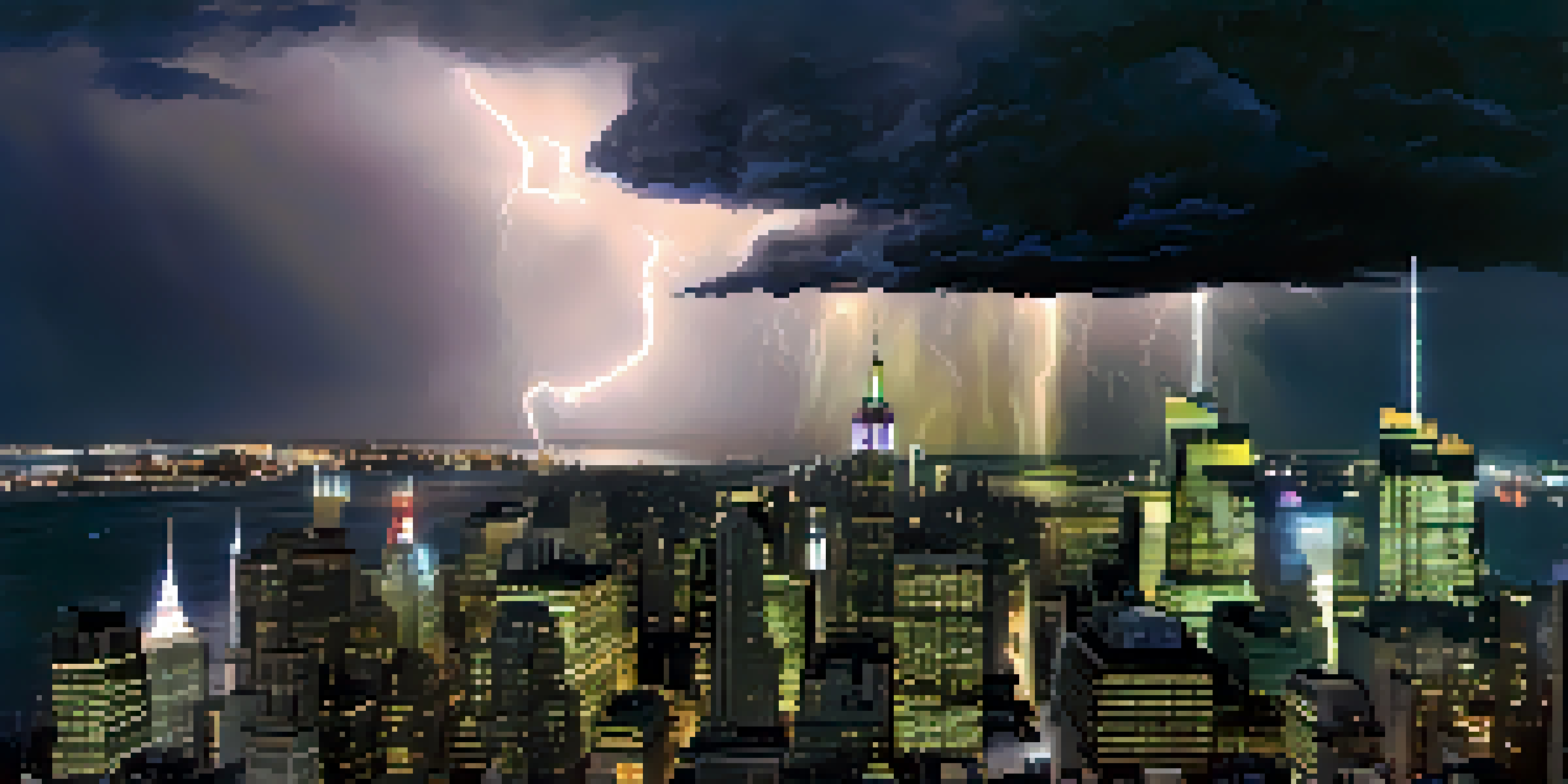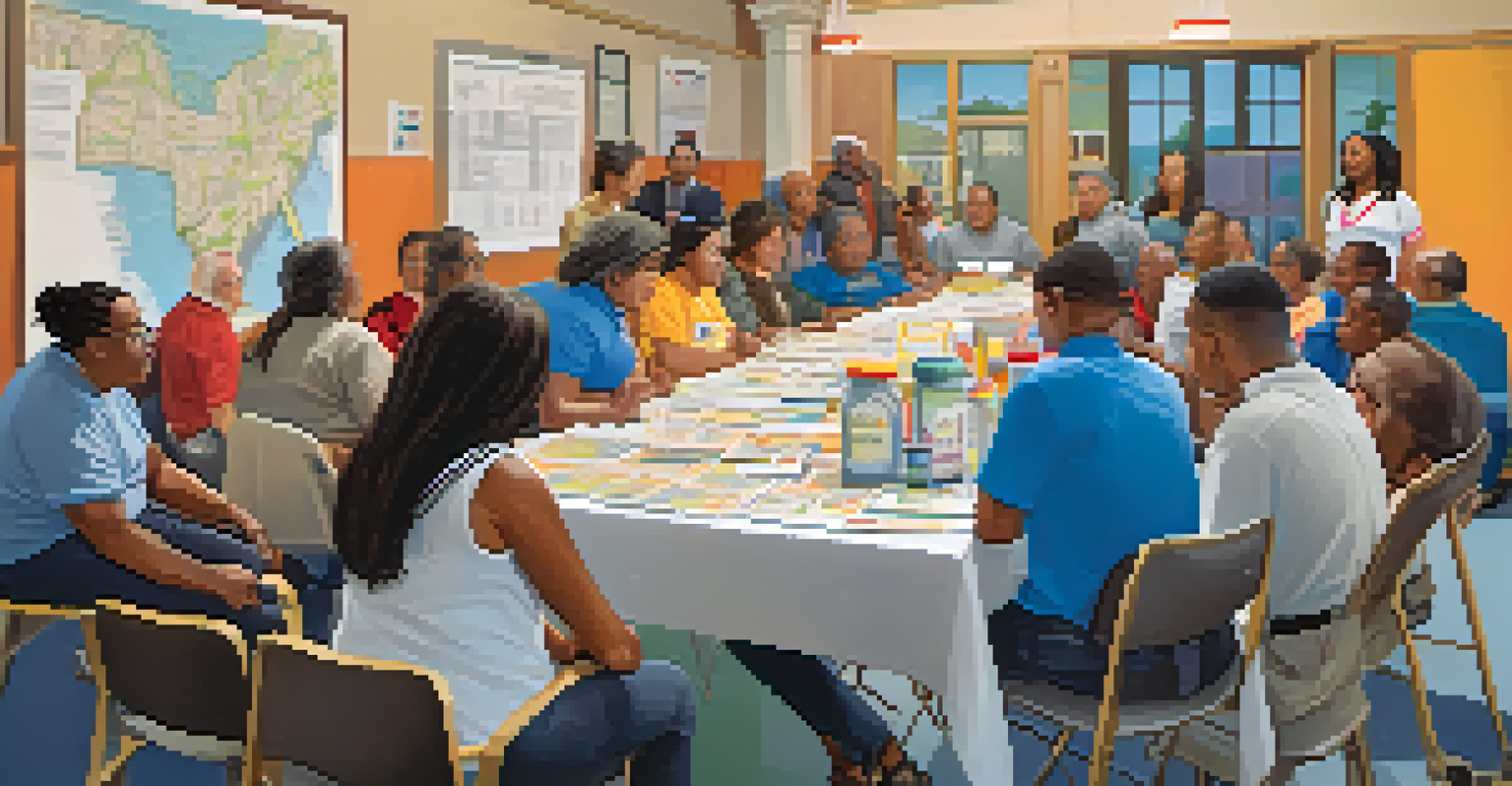Identifying Natural Disasters NYC is Vulnerable To

Hurricanes: The Atlantic's Powerful Storms
New York City is no stranger to hurricanes, with the Atlantic Ocean serving as a breeding ground for these powerful storms. Historically, hurricanes like Sandy in 2012 showcased the city's vulnerability, leading to widespread flooding and destruction. As climate change intensifies storm patterns, the likelihood of more severe hurricanes hitting NYC is a growing concern.
By failing to prepare, you are preparing to fail.
Understanding hurricane season, which runs from June to November, is crucial for NYC residents. Preparedness can make a significant difference; having an emergency kit, knowing evacuation routes, and staying informed through weather updates are essential steps. The city's extensive network of storm shelters also plays a vital role in protecting residents during such events.
Moreover, New York City's infrastructure is constantly being evaluated and improved to withstand these storms. From flood barriers to advanced forecasting technology, the city is committed to enhancing its resilience against hurricanes. However, individual preparedness remains key to minimizing risks during these natural disasters.
Flooding: A Growing Threat in Urban Areas
Flooding in New York City is a major concern, exacerbated by heavy rainfall and rising sea levels. The city's low-lying areas, particularly in zones near rivers and coastlines, are at heightened risk during intense storms or prolonged rain. In fact, even minor weather events can lead to flash floods, causing substantial damage to properties and infrastructure.

The impact of flooding extends beyond physical damage; it can disrupt transportation and essential services. Residents often find themselves stranded or without power, amplifying the need for effective citywide emergency management plans. Flood-prone areas such as Lower Manhattan and parts of Brooklyn often serve as reminders of why proactive measures are necessary.
Hurricane Preparedness is Essential
Residents of New York City must prioritize preparedness through emergency kits, evacuation routes, and staying informed during hurricane season.
To mitigate flooding risks, New York City has implemented various strategies, including green infrastructure projects like rain gardens and permeable pavements. Such initiatives aim to absorb excess rainwater and reduce runoff, ultimately protecting vulnerable neighborhoods. Community involvement and awareness are also vital in fostering a culture of preparedness.
Winter Storms: Snow and Ice Hazards
Winter storms can pose significant challenges for New York City, bringing heavy snowfall and icy conditions that disrupt daily life. Snow accumulation can lead to hazardous driving conditions, school closures, and delays in public transportation. For many residents, the winter season requires careful planning and preparation to navigate these challenges safely.
The best way to predict the future is to prepare for it.
Ice storms, in particular, can create dangerous situations, as freezing rain coats surfaces and leads to power outages. The weight of ice on tree branches often causes them to snap, damaging vehicles and homes. Therefore, staying informed about weather forecasts and having an emergency plan in place is essential during winter months.
The city's response to winter storms includes snow removal crews and resources dedicated to maintaining road safety. However, residents must also take precautions, such as using salt on sidewalks and avoiding unnecessary travel during severe weather. By working together, the community can remain safe and resilient in the face of winter storms.
Earthquakes: A Rare but Real Risk
While New York City is not situated on a major fault line, earthquakes are still a potential threat. The city has experienced minor tremors, and experts warn that larger earthquakes, while infrequent, could occur. Understanding this risk is essential, as the consequences of an earthquake can be severe, particularly in densely populated areas.
Residents may be surprised to learn that NYC has experienced earthquakes in the past, albeit of low magnitude. However, even minor quakes can lead to structural damage and raise concerns about building safety. Therefore, it's important for city officials and homeowners to ensure that older buildings meet current safety standards.
Flooding Risks Require Proactive Measures
With rising sea levels and heavy rainfall, NYC's low-lying areas need proactive flood mitigation strategies and community awareness.
Preparedness for earthquakes includes securing heavy furniture, creating a family emergency plan, and knowing what to do during a quake. By fostering awareness and readiness, New Yorkers can effectively respond to this natural disaster, regardless of its rarity.
Tornadoes: Low Probability, High Impact
Tornadoes are not commonly associated with New York City, but they can occur, often resulting in significant damage. Although the city experiences tornadoes less frequently than other regions, the potential for devastation exists, especially in the event of a strong storm system. Tornadoes can uproot trees, damage buildings, and pose serious risks to public safety.
The most notable tornado in NYC history struck in 1985, causing damage in Brooklyn and Queens. Residents are often unprepared for such occurrences, making awareness and education critical. Understanding tornado watches and warnings can help residents respond appropriately when severe weather threatens the area.
To stay safe from tornadoes, it's important to have a plan in place, including a designated safe area within homes, such as basements or interior rooms. Community preparedness initiatives can further enhance safety by educating residents about the signs of a tornado and how to react quickly when one is spotted.
Heat Waves: An Increasingly Common Hazard
Heat waves pose a significant threat to New York City, particularly during the summer months when temperatures can soar. With urban heat island effects—where concrete and asphalt trap heat—NYC can experience temperatures several degrees higher than surrounding areas. Vulnerable populations, including the elderly and those with preexisting health conditions, are especially at risk during extreme heat events.
The impact of heat waves can be severe, leading to heat exhaustion, heat stroke, and even fatalities. Public awareness about the dangers of excessive heat and the importance of hydration and shade is crucial. Local authorities often issue alerts during heat waves, urging residents to stay indoors and take precautions.
Community Resilience Enhances Safety
Engaging in local preparedness initiatives and staying informed can significantly bolster New Yorkers' resilience to various natural disasters.
To combat the effects of heat waves, New York City has developed programs like cooling centers, where residents can seek refuge from the heat. Community initiatives focus on educating residents about the importance of recognizing heat-related illnesses and understanding emergency procedures. By fostering a culture of preparedness, New Yorkers can protect themselves and their loved ones during such extreme weather events.
Preparing for Natural Disasters: Key Takeaways
Preparation is the cornerstone of resilience when it comes to natural disasters in New York City. Understanding the types of disasters the city faces—hurricanes, flooding, winter storms, earthquakes, tornadoes, and heat waves—enables residents to develop tailored preparedness plans. Having an emergency kit, communication plans, and knowledge of local resources can significantly reduce risks.
Community engagement is also vital; participating in local preparedness workshops or neighborhood meetings can foster a sense of collective responsibility. The city often collaborates with organizations to provide resources and training to help residents understand how to respond effectively during a disaster. Together, these efforts can build a stronger, more resilient community.

Finally, staying informed through reliable sources, such as local news and emergency management agencies, is essential. Regularly updating your emergency plan and kit ensures that you and your family are ready to face any challenges that may arise. By prioritizing preparedness, New Yorkers can weather the storms—both literally and figuratively—that come their way.